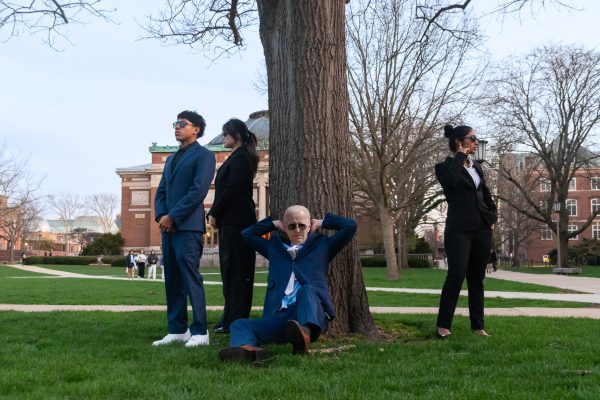Online or in print: students choose their news style
September 1, 2005
When Emily Galassi wakes up each morning, she checks her e-mail, AOL Instant Messenger and The Chicago Tribune’s online Web site.
“When I want to know what’s happening, I go to my computer,” Galassi said. “Online news let’s me know what’s going on at any given moment around the world, so I’m always connected.”
Galassi, a senior in LAS, shares this viewpoint with a growing number of Americans. A recent study completed by The Pew Research Center concludes that the Internet continues to grow as a source of news for Americans. About one-in-four, 24 percent, list the Internet as a main source of news.
Roughly the same number, 23 percent, say they go online for news every day, up from 15 percent in 2000; the percentage checking the Web for news at least once a week has grown from 33 percent to 44 percent over the same time period.
This fact is particularly observable among young adults ages 18-24, according to a study by the Online Publishers Association, which ranked the Internet as the leading choice for news gathering among young adults. 45.6 percent of respondents identified the Internet as their first choice for news versus only 3.2 percent who chose newspapers.
Get The Daily Illini in your inbox!
Megan McNaughton, senior in LAS, doesn’t bother with newspapers.
“They are bulky, lengthy and expensive,” McNaughton said.
So many of her daily tasks are on the computer that McNaughton finds it easier to look at an online newspaper.
“It just makes sense to look up a newspaper that is free and easy to navigate rather than pay to have a subscription to a newspaper that I have to spend an hour searching through to find the articles I want to read,” McNaughton said.
Aside from convenience and affordability, McNaughton cited technological innovations as a key determinant in choosing online news. Links to up-to-the-minute weather coverage, national and international headlines, sports scores and even stock tips are all reasons McNaughton prefers the Internet as her main news source.
McNaughton said she watches television news coverage, but a lot of time it doesn’t seem to go very in-depth on the issues it covers.
“I can go online and find a detailed article about an event or topic that piqued my interest on television,” she said.
But if so many young people across America are turning to the Internet for news, then some may ask why all the Daily Illini newspapers are gone by noon at most distribution locations.
Students are still turning to print newspapers to find out about their surrounding community, said Jennifer Follis, a lecturer and adviser in the Journalism Department.
Besides wanting their particular community covered, students can enjoy the accessibility of a print newspaper during their daily excursions.
“Students can read the paper on their way to class, while they’re waiting for a lecture to begin, or even on the Quad between classes,” Follis said. “They can’t open up a computer and read an online newspaper on the Quad.”
The accessibility of newspapers on campus provides many opportunities for students to read not only about Champaign-Urbana, but the entire world.
Colleen Larson, freshman in LAS, said one of the first things she noticed on her first day of classes was the prominence of the Daily Illini in campus buildings and restaurants.
“It was literally everywhere I went,” she said.
Larson notes that she had heard of the Daily Illini even before she arrived on campus.
“People told me it was a regular thing to read the Daily Illini on the way to class, that a lot of people read the newspaper on campus,” she said.
Larson said she appreciates it is hip on campus to be informed about the world.
“I’ve always read the newspaper, so I’m glad I don’t have to feel like a dork for it on campus,” she said.
One thing is certain, despite differences of opinion on the particular advantages each medium affords readers, University students are nothing if not well-informed.





